Pharmacogenetics and Pharmacotherapy of Military Personnel Suffering from Post-traumatic Stress Disorder
- PMID: 27834145
- PMCID: PMC5652029
- DOI: 10.2174/1570159X15666161111113514
Pharmacogenetics and Pharmacotherapy of Military Personnel Suffering from Post-traumatic Stress Disorder
Abstract
Background: Posttraumatic stress disorder (PTSD) is a severe problem among soldiers with combating experience difficult to treat. The pathogenesis is still not fully understood at the psychological level. Therefore, genetic research became a focus of interest. The identification of single nucleotide polymorphisms (SNPs) may help to predict, which persons are at high risk to develop PTSD as a starting point to develop novel targeted drugs for treatment.
Methods: We conducted a systematic review on SNPs in genes related to PTSD pathology and development of targeted pharmacological treatment options based on PubMed database searches. We focused on clinical trials with military personnel.
Results: SNPs in 22 human genes have been linked to PTSD. These genes encode proteins acting as neurotransmitters and receptors, downstream signal transducers and metabolizing enzymes. Pharmacological inhibitors may serve as drug candidates for PTSD treatment, e.g. β2 adrenoreceptor antagonists, dopamine antagonists, partial dopamine D2 receptor agonists, dopamine β hydroxylase inhibitors, fatty acid amid hydrolase antagonists, glucocorticoid receptor agonists, tropomyosin receptor kinase B agonists, selective serotonin reuptake inhibitors, catechol-O-methyltransferase inhibitors, gamma-amino butyric acid receptor agonists, glutamate receptor inhibitors, monoaminoxidase B inhibitors, N-methyl-d-aspartate receptor antagonists.
Conclusion: The combination of genetic and pharmacological research may lead to novel targetbased drug developments with improved specificity and efficacy to treat PTSD. Specific SNPs may be identified as reliable biomarkers to assess individual disease risk. Focusing on soldiers suffering from PTSD will not only help to improve treatment options for this specific group, but for all PTSD patients and the general population.
Keywords: DNA; gene-environment interactions; genetics; mental diseases; pharmacology; single nucleotide polymorphisms.
Copyright© Bentham Science Publishers; For any queries, please email at epub@benthamscience.org.
Figures

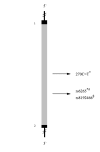

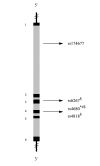



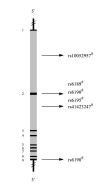


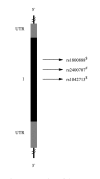


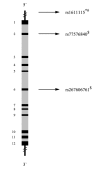


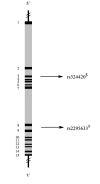



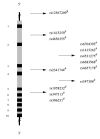


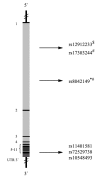
Similar articles
-
Pre-deployment programmes for building resilience in military and frontline emergency service personnel.Cochrane Database Syst Rev. 2021 Dec 6;12(12):CD013242. doi: 10.1002/14651858.CD013242.pub2. Cochrane Database Syst Rev. 2021. PMID: 34870330 Free PMC article.
-
Psychological and pharmacological interventions for posttraumatic stress disorder and comorbid mental health problems following complex traumatic events: Systematic review and component network meta-analysis.PLoS Med. 2020 Aug 19;17(8):e1003262. doi: 10.1371/journal.pmed.1003262. eCollection 2020 Aug. PLoS Med. 2020. PMID: 32813696 Free PMC article.
-
Drugs for preventing postoperative nausea and vomiting in adults after general anaesthesia: a network meta-analysis.Cochrane Database Syst Rev. 2020 Oct 19;10(10):CD012859. doi: 10.1002/14651858.CD012859.pub2. Cochrane Database Syst Rev. 2020. PMID: 33075160 Free PMC article.
-
Pharmacotherapy for posttraumatic stress disorder.Cochrane Database Syst Rev. 2000;(4):CD002795. doi: 10.1002/14651858.CD002795. Cochrane Database Syst Rev. 2000. Update in: Cochrane Database Syst Rev. 2006 Jan 25;(1):CD002795. doi: 10.1002/14651858.CD002795.pub2. PMID: 11034765 Updated.
-
Systemic pharmacological treatments for chronic plaque psoriasis: a network meta-analysis.Cochrane Database Syst Rev. 2021 Apr 19;4(4):CD011535. doi: 10.1002/14651858.CD011535.pub4. Cochrane Database Syst Rev. 2021. Update in: Cochrane Database Syst Rev. 2022 May 23;5:CD011535. doi: 10.1002/14651858.CD011535.pub5. PMID: 33871055 Free PMC article. Updated.
Cited by
-
Effects of pregabalin on neurobehavior in an adult male rat model of PTSD.PLoS One. 2018 Dec 31;13(12):e0209494. doi: 10.1371/journal.pone.0209494. eCollection 2018. PLoS One. 2018. PMID: 30596711 Free PMC article.
-
Vesicular monoamine transporter 2 mediates fear behavior in mice.Genes Brain Behav. 2020 Jun;19(5):e12634. doi: 10.1111/gbb.12634. Epub 2020 Jan 14. Genes Brain Behav. 2020. PMID: 31898856 Free PMC article.
-
Expression and functions of adenylyl cyclases in the CNS.Fluids Barriers CNS. 2022 Mar 20;19(1):23. doi: 10.1186/s12987-022-00322-2. Fluids Barriers CNS. 2022. PMID: 35307032 Free PMC article. Review.
-
Pharmaceutical Humanities and Narrative Pharmacy: An Emerging New Concept in Pharmacy.Pharmaceuticals (Basel). 2025 Jan 3;18(1):48. doi: 10.3390/ph18010048. Pharmaceuticals (Basel). 2025. PMID: 39861111 Free PMC article. Review.
-
Prominent genetic variants and epigenetic changes in post-traumatic stress disorder among combat veterans.Mol Biol Rep. 2024 Feb 23;51(1):325. doi: 10.1007/s11033-024-09276-0. Mol Biol Rep. 2024. PMID: 38393604 Review.
References
-
- Forbes D., Lockwood E., Elhai J.D., Creamer M., Bryant R., McFarlane A., Silove D., Miller M.W., Nickerson A., O’Donnell M. An evaluation of the DSM-5 factor structure for posttraumatic stress disorder in survivors of traumatic injury. J. Anxiety Disord. 2014;29C:43–51. - PubMed
-
- Shay J. Achilles in Vietnam: Combat Trauma and the Undoing of Character. Scribner; 1995. p. 272.
-
- Shoshana Ringel J.R. Trauma: Contemporary Directions in Theory, Practice, and Research. SAGE Publications; 2012. p. 272.
-
- Andreasen N.C. Posttraumatic stress disorder: a history and a critique. Ann. N. Y. Acad. Sci. 2010;1208:67–71. - PubMed
Publication types
MeSH terms
LinkOut - more resources
Full Text Sources
Other Literature Sources
Medical
